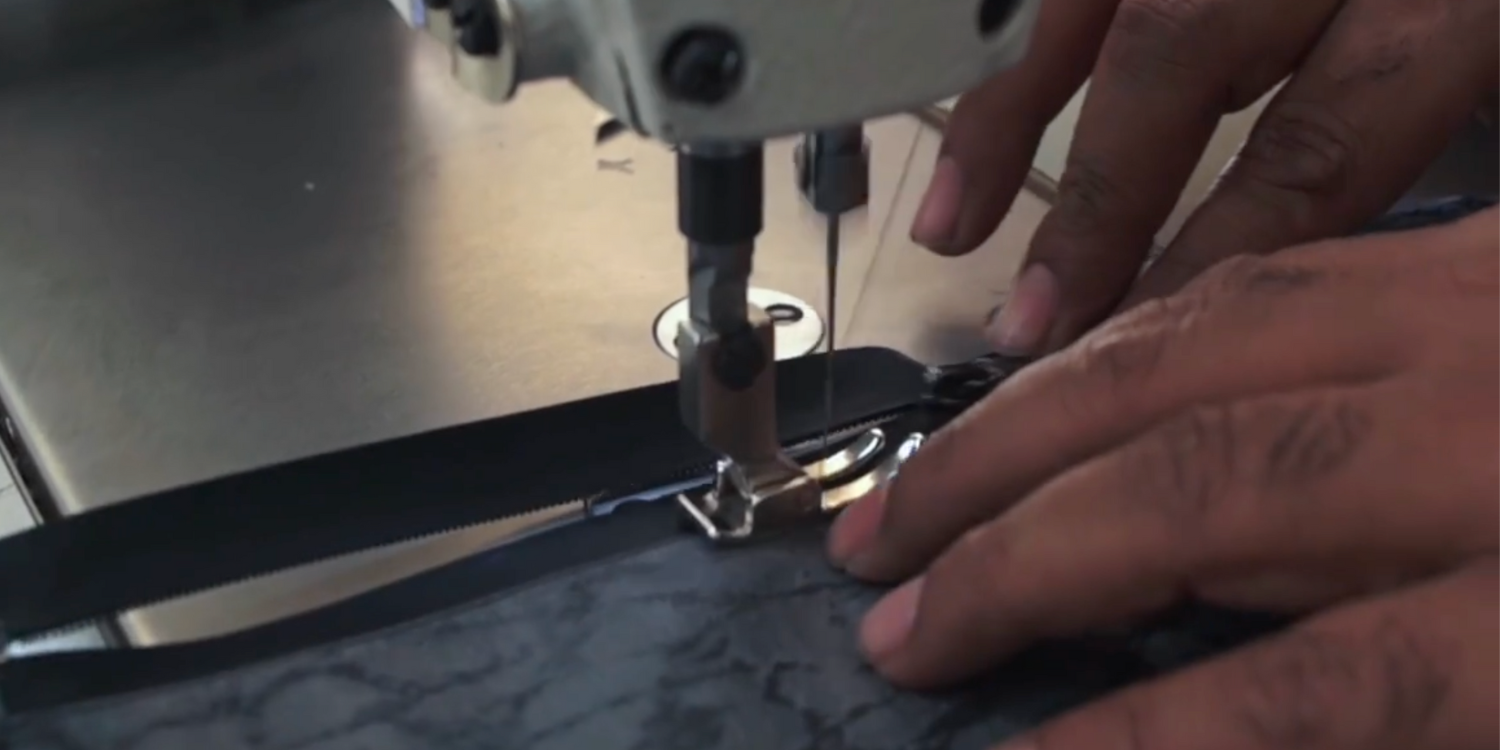
The End Of Fast Fashion
To understand the fundamental root of Fast Fashion, we first need to look at our Western world’s history and more particularly the Industrial Revolution.
Before the dawn of the 18th century, fashion was slow and methodological. Each step of production could be traced to local and sustainable practices.
It wasn't until the Industrial Revolution gave birth to innovative technology, that the foundation of society dramatically took a turn. Outsourcing expeditions brought cheap goods, newly discovered inventions- such as the sewing machine, chemical dyes and so forth. These technological and chemical advancements allowed for faster production, and the emergence of new industries paved the way for an era of exploitation.
As the traditional structures of the fashion industry phased out, clothing became more affordable and trend cycles grew faster. The habit of shopping shifted from being an occasional event to a daily practice.
INDUSTRIAL DYES

Seasons Change
Over 200 years later, consumption manifests itself as a form of entertainment. Clothing now more than ever, serves as the primary means of self-expression. The 52 “micro-seasons” implemented by Fast fashion giants such as the Inditex group, promise “bi-weekly” deliveries pushing competitors to join the rat-race.
Endless designs and styles flood the market and create a norm for key players in the industry to spit-out collections at rapid rates whilst constantly pushing to meet new demands. In the labyrinth of an oversaturated market, Fast-fashion brands fuel this chase.
From the dependency of “retail-therapy”, the encouragement of “throw-away” culture and the desire to engrave our social status enables a cycle that robs us of integrity and leads to a loop of dissatisfaction. The aimless strive to be “in-trend” comes with an enormous environmental cost (The movie “The True Cost” pertinently illustrates the issue).
“Fast fashion isn’t free. Someone, somewhere is paying.” — LUCY SIEGLE
The Impact of Fast-Fashion
The harsh truth is that fast-fashion has no future in sustainability.
The pressure to maintain low costs and decrease production time leaves no room for a structure that is environmentally-conscious.
The fashion industry is the second highest polluter of clean water on the planet after agriculture. Natural dyes and raw elements that were once used to characterise our garments are now replaced with over 8,000 different synthetic chemicals. Side-effects of unregulated waste management systems, especially in impoverished nations, lead to dangerously high levels of contaminant discharge into regional watersheds. The danger of large quantities of potent toxins from textile treatment chemicals pose concern for not only the natural environment, but for people and communities in the surrounding areas.
According to the Ellen MacArthur Foundation, it is estimated that the industry emits approximately 1.2 billion tons of carbon dioxide into the environment each year. The textile industry surpasses the combined carbon output of the shipping and air travel sectors combined; only to produce garments that find their way to landfills, waterways or are burnt into our atmosphere.
97% of fast fashion clothing is manufactured in developing countries with a lack of labor laws, where workers are being exploited under inhumane working conditions.
As the majority of consumers of fast fashion live in western economies with well-established labor laws, it is quite easy to underestimate the harsh reality of labor exploitation that fast fashion generates in developing economies. Governments in countries such as Bangladesh cannot currently provide a truly comprehensive degree of oversight regarding workers’ protection laws. This allows for a system that unfortunately leaves textile workers with little to no legal protection against exploitation, and even less in bargaining power with their profit-driven employers.
A tragic example that best exemplifies the cruel reality of fast-fashion is in the 2013 collapse of Rana Plaza, an easily preventable tragedy that killed over 1100 workers in Bangladesh.
The Birth of Slow Fashion
A movement towards ethical labor, quality craftsmanship, sustainable practices and mindful manufacturing.
The revolution encourages consumers to purchase less garments, made of higher quality, from more transparent brands using more sustainable practices.
Slow fashion is about establishing a mindful approach to fashion that favours intentionality. The movement to a fulfilling and quality life is outlined in a conscious effort.
Getting started is simple:

Join a movement.
Fashion revolution is a global campaign that takes direct initiatives towards a future of fair fashion. Focusing on political, social and policy change, its mission is to reconstruct the norms and standards of fashion across the globe.
“Consumer demand can revolutionise the way fashion works as an industry. If everyone started to question the way we consume, we would see a radically different fashion paradigm.”
— CARRY SOMERS cofounder of Fashion Revolution
Purchase from eco-conscious brands.
Shop locally, second-hand, and vintage. Consuming upcycled fashion decreases the demand to constantly produce and promotes a more circular economy. Reach out to brands to learn about their supply-chain and the initiatives they have implemented.
Choose transparency.
Pay attention to labels on your garments to ensure that the materials are crafted from either organic, recycled or other more sustainable fibres (check out our Sustainable textile glossary for some textiles you may not have heard of).
Take care of your clothes.
Wash less using gentle cleansing methods, get creative in attempts to reinvent a look, and learn the fundamental basics of repairing your clothes (taking advantage of your local repair shop). Shifting away from the perception that the clothing we own is so easily disposable.
Invest in a style that is both versatile and timeless.
Not only is a sustainable future holistically beneficial, it is also a celebration of the present moment. It is directly linked to the relationship we experience with ourselves, our society and our planet. The strive to establish this connection, is what truly gives meaning to harmony.




4 comments
This is an awesome post. Keep sharing new fashion ideas with us. https://bit.ly/3usz3ef
Trena
This is a very informative blog. Thanks for share with us.
https://www.topsandbottomsusa.com/collections/moose-knuckles
Alina Duvall
Very interesting to read you
Good luck to you
TerryVoplE
Thank you very much for the information provided
I’m very impressed
Bernardendax
Leave a comment
This site is protected by hCaptcha and the hCaptcha Privacy Policy and Terms of Service apply.